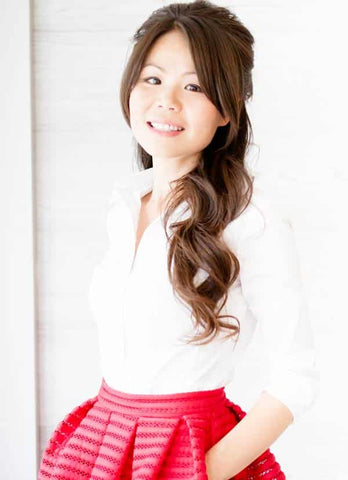Everything you need to know about Tet, Vietnamese New Year: with Thuy Pham
by Holly Thomson

Vietnamese chef Thuy Pham describes the Lunar New Year traditions she grew up with, and talks about what life was like on her grandparents’ rural rice farm. She shares the ancient Vietnamese stories behind famous New Year food, and the flavours she remembers from the celebration.
Thuy is founder and head chef of The Little Viet Kitchen, and has a cookbook of the same name (The Little VIet Kitchen, £22, Absolute Press).
“Vietnamese Tet and Chinese New Year are exactly the same.
It’s interesting to me that Lunar New Year is mainly known as Chinese New Year in the West, even though it’s also celebrated in Vietnam, Singapore, Indonesia, Malaysia, Myanmar, Thailand, Cambodia, the Philippines and Mauritius.
In Vietnam we call the celebration Tết, but really we’re all celebrating Lunar New Year – which is what I think it should be called, rather than simply Chinese New Year. We celebrate in slightly different ways and with different food, but we’re celebrating exactly the same thing, on exactly the same day.
In much the same way that Christmas is celebrated differently across Europe whilst still essentially being the same thing.
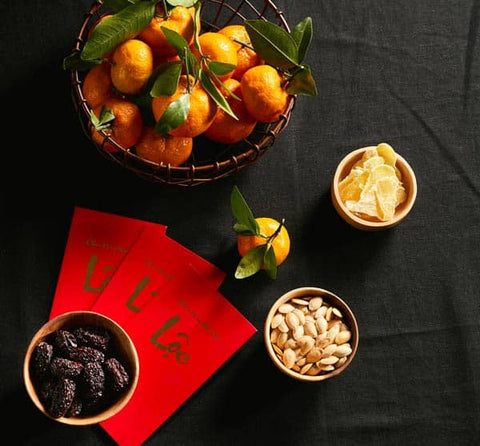
“My memories of Tết are the sound of food sizzling, the aromas of spices and broths, and the peals of laughter from the women in the kitchen.
In many ways, the day itself was like any other; the animals still needed to be fed, the rice hadn’t stopped growing, but the main difference was the excitement. Everyone would gather at my grandparents’ house: Their 8 children and partners, plus a fair few children each!
Grandma’s house was not luxurious, it was built with palm trees and leaves, with wooden beds and cloths dividing the space into rooms, but it felt enormous to me because it was so much bigger than the hut in which we lived.
“We didn’t have electricity, so we knew we had to work hard to get everything done by 5.30pm, in the light.
Everyone would wake up at 4am, which was when all the animals started to wake. Then by 5am the aunties would arrive promptly to start the food preparation. Then all the kids would start making the usual new year’s racket as the motorbikes and bicycles slowly started arriving and parking up outside in the front yard.
As everyone gathered and the conversation and laughter started to flow, we would know it was going to be a great start to the year!
“And when I woke up I knew I was getting pork for the only time of the year, and spring rolls!
I also knew that the pickles grandma had made the previous week were now ready to eat too. The house would be filled with the smells of star anise, cinnamon and lemongrass coming from the kitchen.
Grandma would be in there; bashing things, making soup, the rice would be on, and it was all beginning.
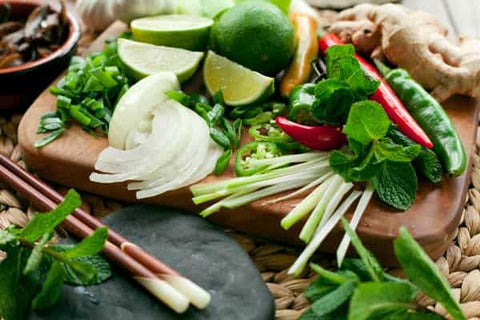
“I would be so excited about my New Year’s outfit.
We lived next to a tailor and my mum always managed to get enough wastage fabric to make me and my sister new clothes for Tết. They were a patchwork of offcuts, but luckily we were small! The excitement was unbelievable and without fail we always loved it.
“And there would be food everywhere!
The Tết recipes would include Thit Kho, which is braised belly pork and eggs, Pho Ga chicken noodle broth, spring rolls, mustard cabbage pickles, sticky rice, salads, rice, noodles, dried fruits and coloured cakes. Looking back I now realise we were poor, but at the time I didn’t know it. When I think of my childhood it’s the New Year table covered in food that always comes to my mind.
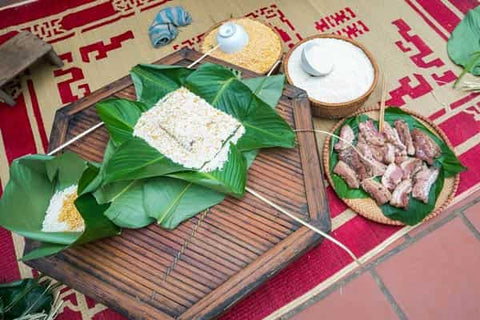
“An important dish to eat at Tết is a sticky rice recipe called Banh Tết, and it represents many aspects of the Vietnamese people.
You start with a banana leaf, then a layer of sticky rice. Rice is something we eat every day, it’s not special but it represents life and who we are. Then there’s a layer of meat - pork - because it’s a special occasion, and that represents wealth and a happy family.
Finally you add a golden egg yolk, which represents richness, luck and the hope of the year to come. You then have to wrap it up tightly. The knots are very important. You’re tying up the safety of your family, and enclosing the love and good luck for the year. Then you steam it lovingly for 18 hours.
“For me that dish is all about gratitude.
We’re thankful for having the rice that we rely on, for being able to buy enough meat to keep us healthy, and for having your loved ones around you to share the dish with. It’s a very skilled dish to make. No tools or machines have yet been built that can adequately replace the techniques of mums and aunties!
“The Banh Tết story dates back to the Hong dynasty, when the King was dying.
The fable goes that the King had 21 sons and he didn’t want to automatically give the crown to the oldest. So he tasked his sons to bring him a dish, and the best one would earn the throne. So the sons went out and got hold of the best ingredients they could, and the most expensive.
But the youngest wanted to make a dish that truly represented Vietnam and told a story. He created this rice dish that both rich and poor people could make. The king loved it and made him the official heir. Once he became King he made it the traditional Tết meal, and now 95 million people eat Banh Tết every year.
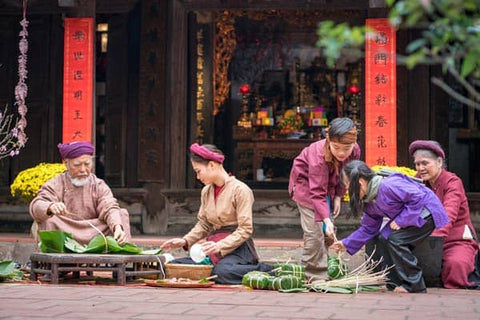
“In our house when it came to eating the feast, the men would sit separately at the front of the house together, women with children in the kitchen
The men would be in their new white shirts to represent purity and a fresh new year. And they'd sit there, drinking and eating all the delicious new years’ food prepared by the super chefs in the kitchen. The men always knew they were loved through the amazing food put on the table, every dish carefully thought-out and lovingly prepared with respect.
With all this said, the real party was in the kitchen! Auntie would be telling stories, Grandma would be going crazy getting everything ready, the children would all be waiting (not so patiently) for delicious food and treats walking around in their new outfits. It was so much fun.
“Grandma was the head chef, and her daughters were the Chefs de Parties.
One auntie would be on dessert, my mum on broth, another auntie on pickles, etc. Grandma ran her kitchen like a restaurant, with stations. Incredible! When we opened the restaurant and I ran my pass at The Little Viet Kitchen for the first time, I knew I’d be ok because it’s in my blood.
Thuy’s Vietnamese menu for Lunar New Year
-
We would always have noodle soup as a main. Vietnamese broths are a labour of love and time-consuming to make, so we often often cook them for special gatherings and celebrations. I would recommend you go for Bun Bo Hue – a spicy beef noodle broth made with ginger, lemongrass, garlic and star anise, or the traditional classic Pho Bo. A slightly easier option would be to try the more delicate and aromatic sister of Pho Bo, Pho Go (chicken pho).
-
Snacks, sides and starters are a must! Fresh Salad Summer Rolls or crispy deep fried Pork Spring Rolls. Or make a refreshing Papaya Salad, served with Rice Cakes and Pickles.
-
End the meal a sweet treat such as the Vietnamese coconut and sweetcorn dessert called Che Bap, which is yellow-gold for good luck. Or Banh Cam – mung bean doughnuts which are perfectly round, so your year will be well rounded with plenty of love, luck, health and wealth.
-
And don’t forget to decorate your home with blossom flowers, vibrant Asian fruit and the colours of red, yellow and pink.
-
Lastly, make sure that you clean your home thoroughly on New Year’s Eve, then not again until after the celebration, so that you start the New Year fresh and don’t sweep away all the good luck.
Thuy explains what's in her fragrant, richly flavoured cooking sauce.
- What's in it? Fresh lemongrass, vegetable oil, dried shrimp, pork, sugar, dried chilli, garlic, shrimp paste, fish sauce and salt.
- When to eat it? Breakfast, brunch, elevenses, lunch, tea, dinner, supper, a midnight snack, or just because you want to!
- Where? This sauce is incredibly versatile and can be used for almost anything! Perfect for marinating, adding an authentic taste of the Mekong Delta to your stir-fry, spicing up your noodles or simply using as a dip.
Feeling inspired? Find more Southeast Asian ingredients here, or read about how Lunar New Year is celebrated in China in our interview with Amy Poon.

